

Say Brooke Fort
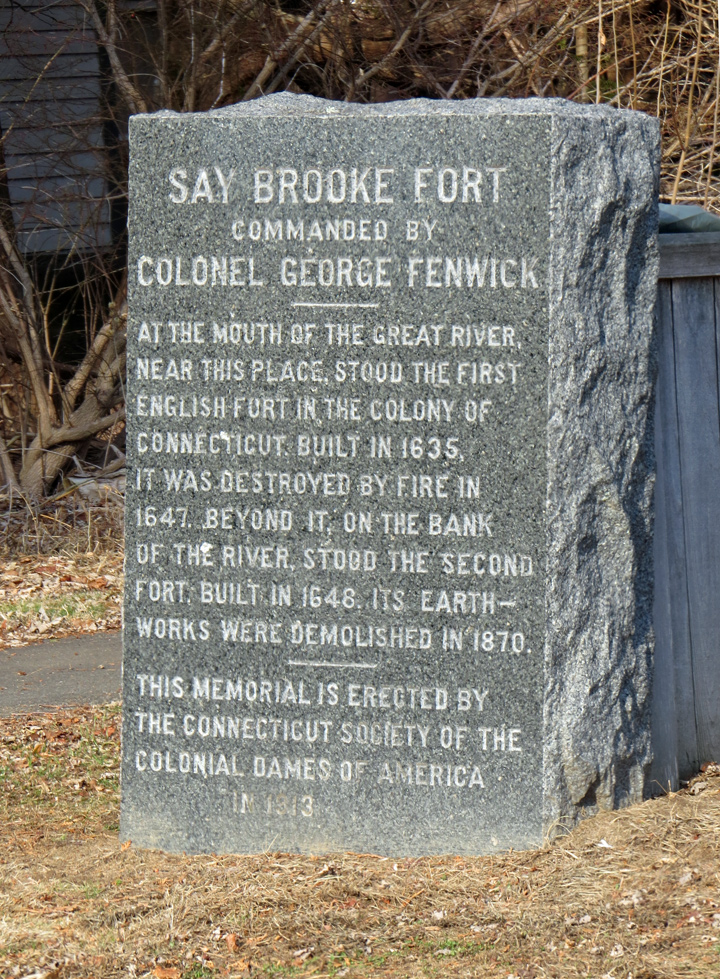
Say Brooke Fort
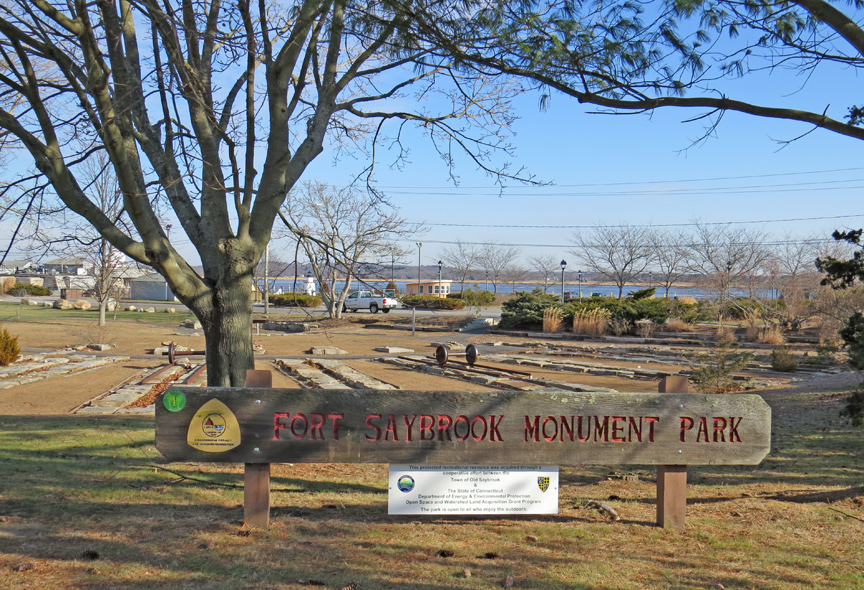
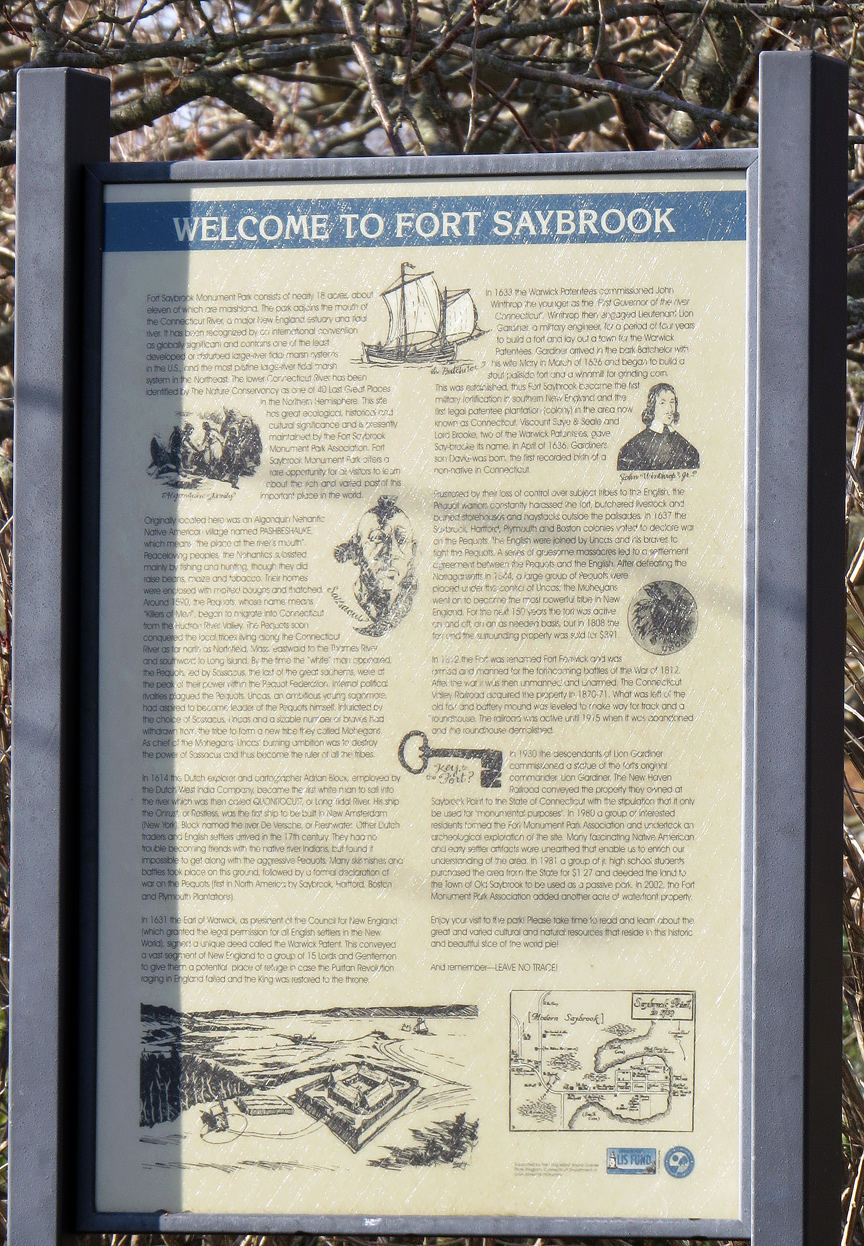
Fort Saybrook
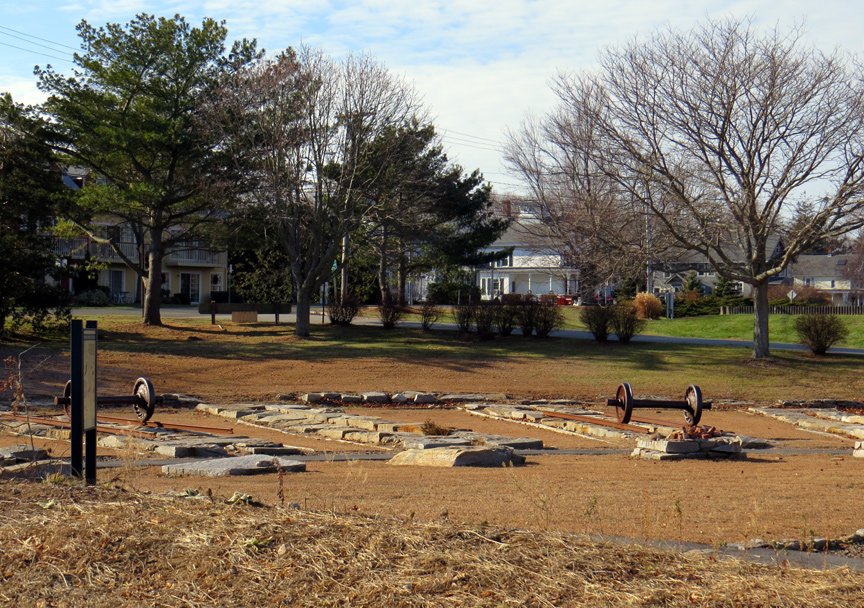
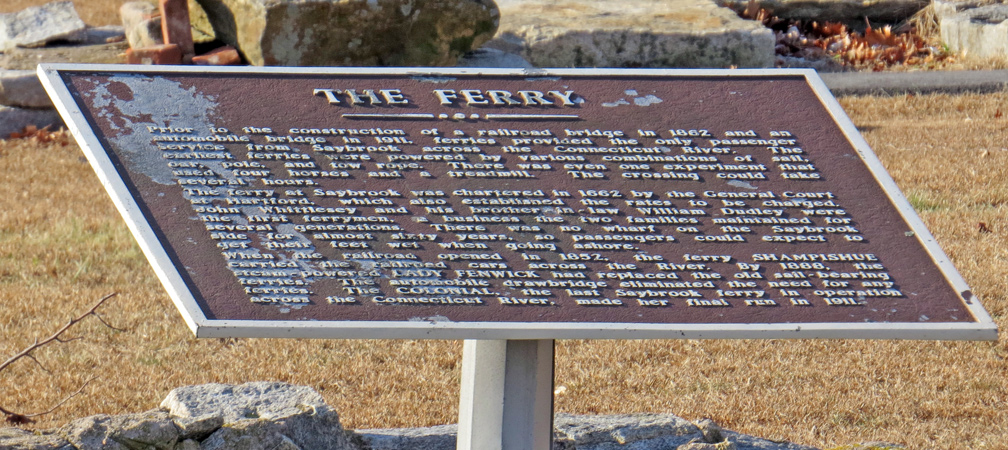
The Ferry

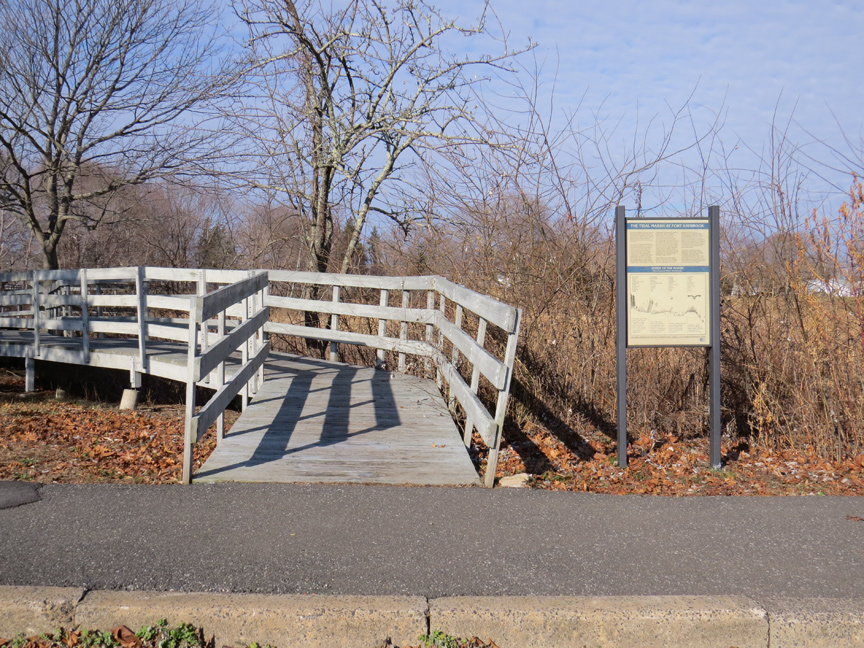
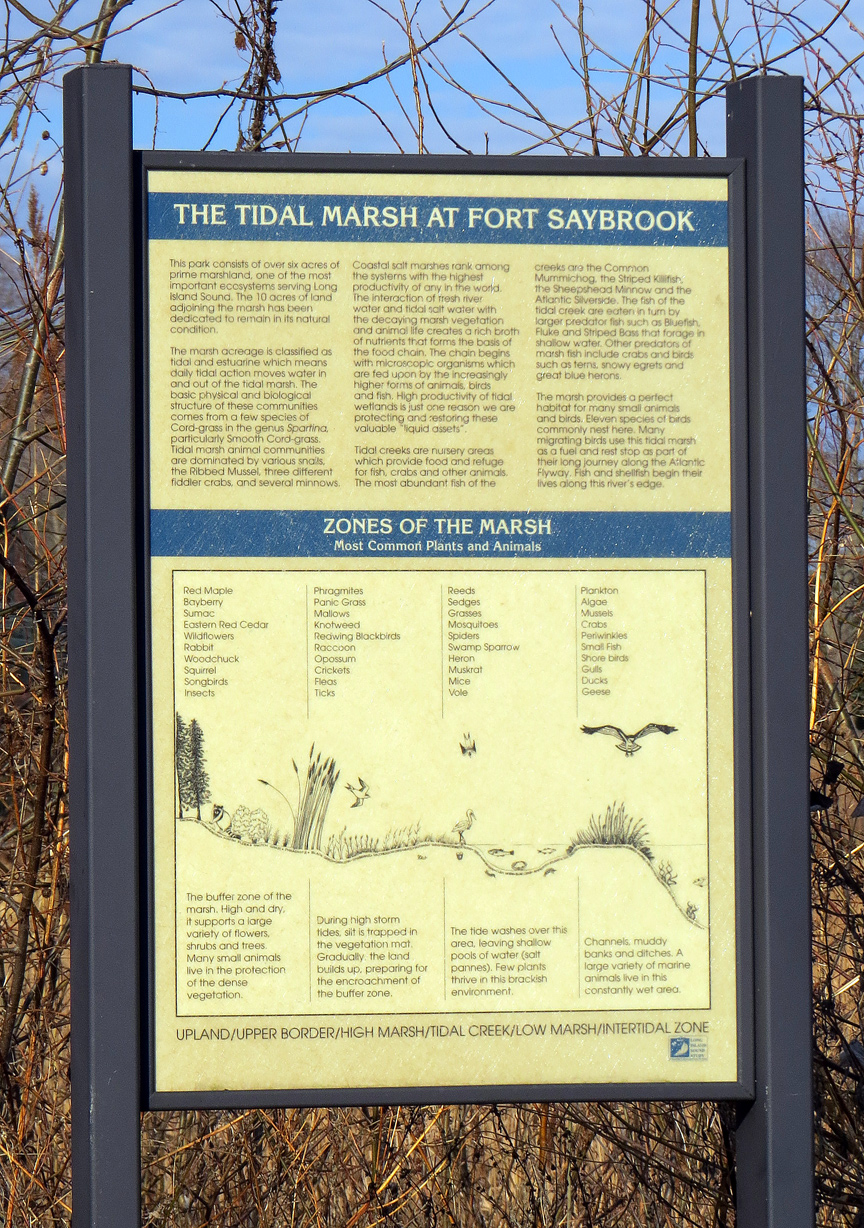
Tidal Marsh
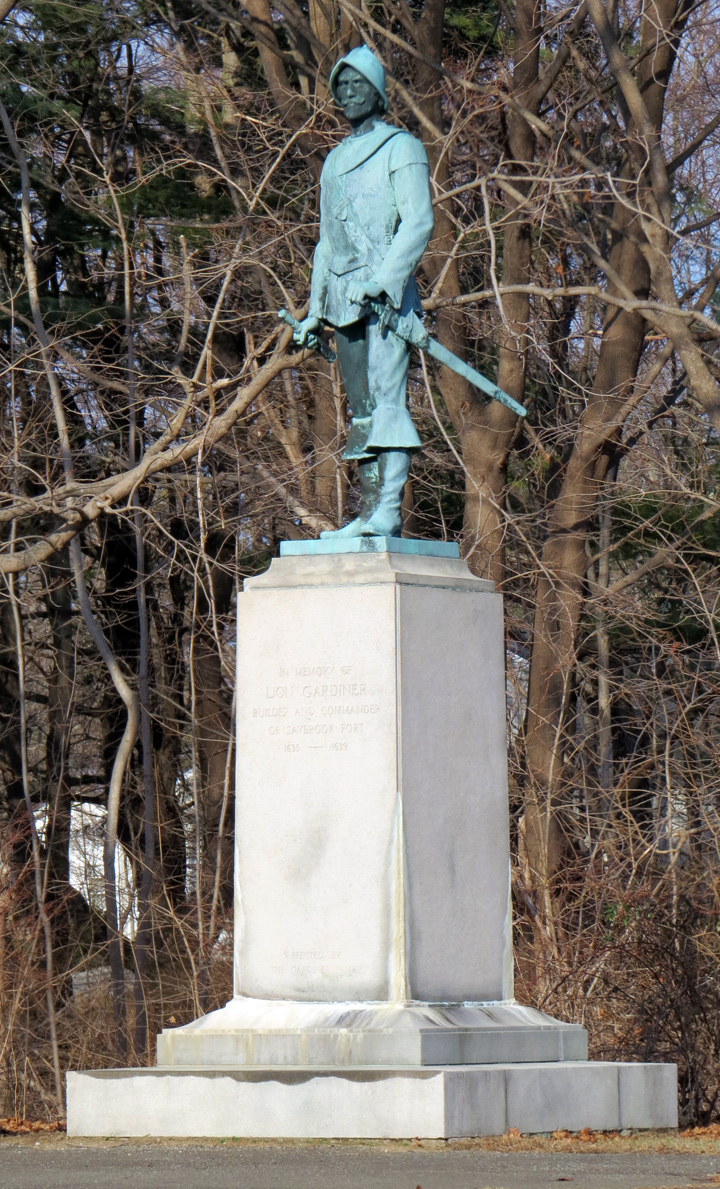
Gardiner as depicted in a statue in Old Saybrook, CT

Lion Gardiner
Lion Gardiner (1599–1663), an early English settler and soldier
in the New World, founded the first English settlement in what became the state
of New York on Long Island. His legacy includes Gardiners Island, which is held
by his descendants.
Lion Gardiner was born in England in 1599 and died in East Hampton, New York, in
1663. He and his wife Mary left Woerdon, the Netherlands, and embarked, probably
at Rotterdam, the Netherlands, in the ship Batcheler. It was bound for New
England by way of London and departed on July 10, 1635. The ship arrived at
Boston at the end of November in 1635.
Governor John Winthrop, the elder, noted Gardiner's arrival in his Journal under
the date November 28: "Here arrived a small Norsey bark of twenty-five tons sent
by Lords Say, etc, with one Gardiner, an expert engineer or work base, and
provisions of all sorts, to begin a fort at the mouth of the Connecticut. She
came through many great tempests; yet, thought the Lord's great providence, her
passengers, twelve men, two women, and all goods, all safe.
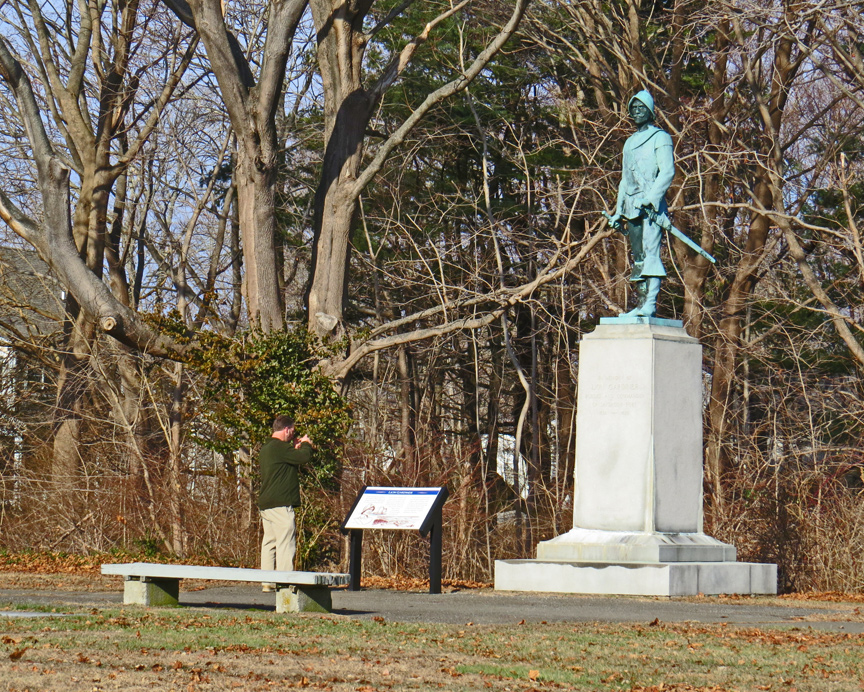
the Fort builder
Shortly before departing from the Netherlands, he married Mary
Willemsen Deurcant, the daughter of Dericke Willemsen Deurcant and Hachin
Bastiens, who was born at Woerden about 1601. She died in 1665 in East Hampton,
New York. She was buried next to her husband. They were the parents of three
children: David, Mary and Elizabeth.
Their only son, David Gardiner, was born on April 29, 1636 at Saybrook. He
married on June 4, 1657, Mary Leringman, a widow, at St. Margaret's Parish in
the City of Westminster, England.
Mary Gardiner was born on August 30, 1638 at Saybrook, Connecticut. She married
in 1658, Jeremiah Conkling, the son of Ananias Conkling, who was from
Nottinghamshire, England.
Elizabeth Gardiner, was born on September 14, 1641 at the Isle of Wight, New
York. She married in 1657, Arthur Howell, a son of Edward Howell of Southampton,
England.
A military engineer in service of the Prince of Orange in the Netherlands, he
was hired by the Connecticut Company in 1635 to oversee construction of
fortifications in the new colony. He finished and commanded the Saybrook Fort at
the mouth of the Connecticut River during the Pequot War of 1636–1637. In 1639
he purchased from the Montaukett tribe an island which they called Manchonat,
located between the North Fork, Suffolk County, New York and South Fork, Suffolk
County, New York. The original grant by which Gardiner acquired proprietary
rights in the island made it an entirely separate and independent "plantation,"
in no way connected either with New England or New York. He was thus empowered
to draft laws for Church and state. He called it the Isle of Wight. It has since
become known as Gardiners Island.
In 1660 he wrote a firsthand account, Relation of the Pequot Warres. The
manuscript was lost among various state archives until rediscovered in 1809; it
was first published in 1833.
He was buried in East Hampton, New York. In 1886 a recumbent effigy was erected
to his memory, and his supposed grave was opened. In it, a skeleton was found
intact. It was that of a man over six feet in height, with a broad forehead and
strong jaws. Gardiner (and many of his progeny) are buried in the South End
Cemetery by Town Pond
Text from Wikipedia
at the Beach
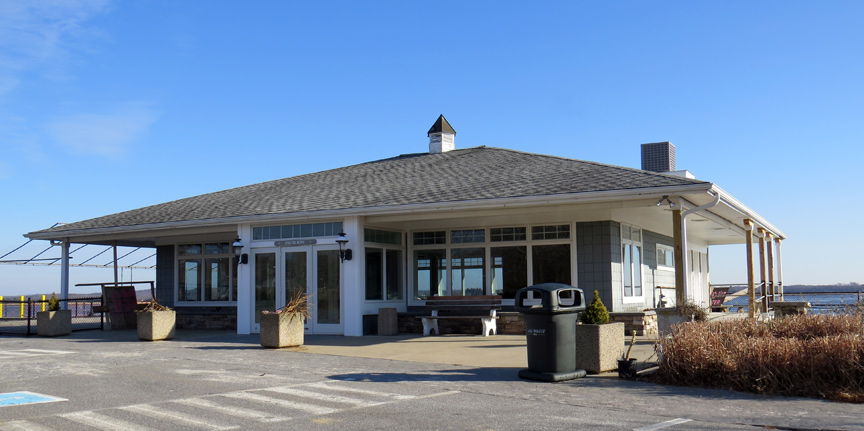
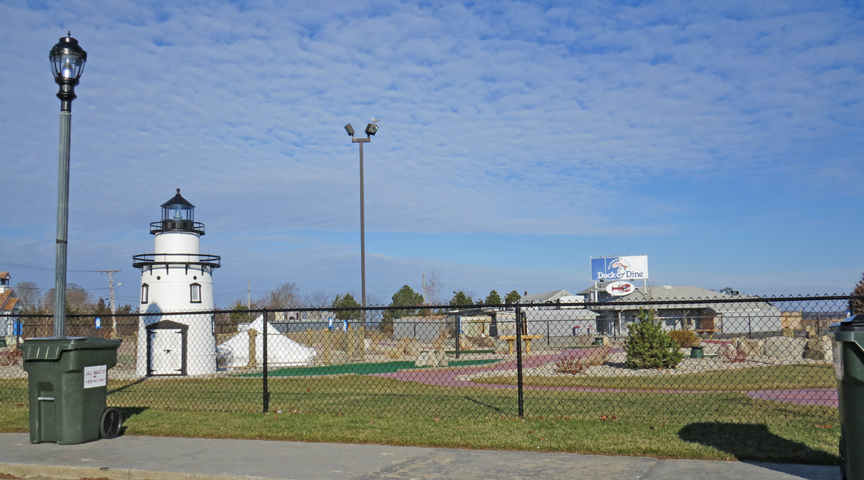
miniature golf
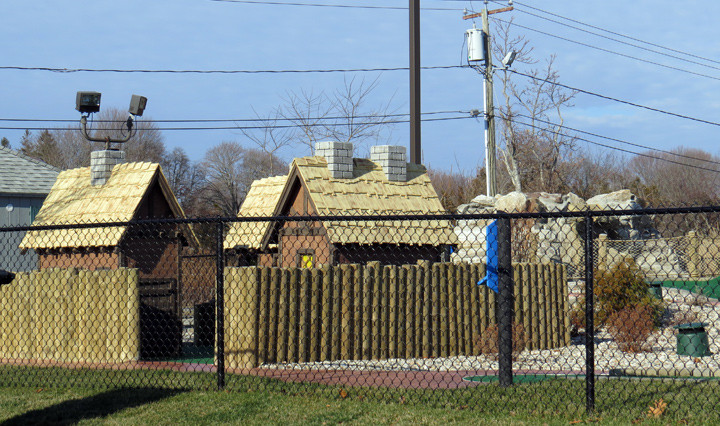
through the mock early settlement
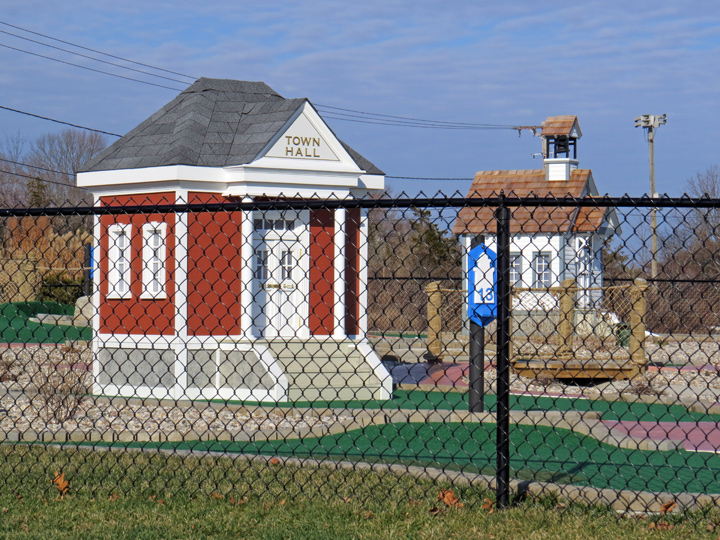
past the Town Hall and church